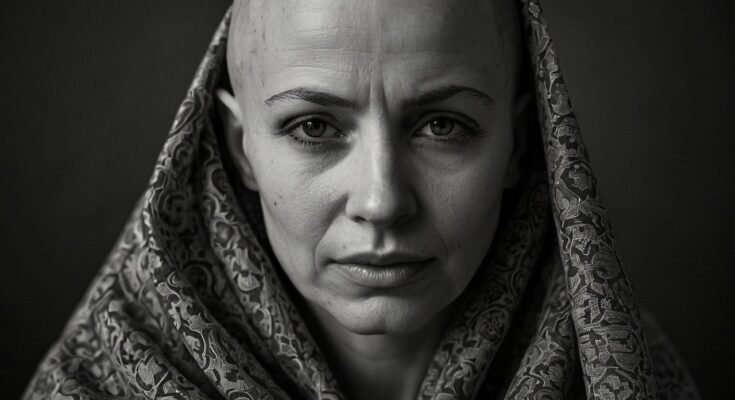A recent report by the American Cancer Society indicates that although there has been a steady improvement in the breast cancer mortality rate in the US, the rate of exposure to breast cancer has increased in younger ages and there are still pronounced racial inequalities.
The study, published on Tuesday in CA A Cancer Journal for Clinicians, had some positive results as well: ‘The overall rate of breast cancer deaths in the United States has decreased by approximately 44% from 1989 to 2022, or almost 518,000 breast cancer deaths averted in this period’. It is attributed greatly to the development of new cancer therapies as well as the improved ability to diagnose the condition at an earlier stage, primary screening being recommended for women of average risk from the age of forty years.
But ,there was also some bad news: The rate of breast cancer diagnosis etiology actually increased steadily, at the rate of 1% per year between 2012 and 2021.
“Over the past decade, breast cancer diagnosis has been on an upward trend at approximately 1% per year, but that rate does not apply to all women within the confines of the said rate, ” Karen Knudsen, the President of the American Cancer Society and the Cancer Action Network, asserted.
As the ages of the women with breast cancer are getting younger, the correlation coefficients suggest that the diagnosis of breast cancer in women under the age of fifty is on a slight rise when compared to the diagnosis in women over the age of fifty, she added. “These are things that we are watching to try to understand.”
Another study published in January suggested that women aged 20 to 49 of breast cancer underwent increased incidence rates over the last two decades.
This has been seen in recent years in relation to other cancers as well, such that of colon cancer, whereby diagnosis has been shifting to an age that is younger than anticipated.
Variances within ethnic groups and geographical locations
As part of the latest report, scientists from the American Cancer Society, Weill Cornell Medicine as well as Harvard Medical School reviewed breast cancer case and mortality statistics sourced from the National Cancer Institute and the branches of the US Centers for Disease Control and Prevention since 1975. They established that the figures had some variations with respect to race and states as well as age.
The findings suggested an ongoing disparity in breast cancer mortality due to race, as Black women experienced 38% higher death rates than White women, unfortunately, breast cancer was less prevalent among them by 5%.
“If you look actually more carefully at the mortality data, this is really driven by young women particularly,” explained Dr. William Dahut, American Cancer Society chief scientific officer. “If you look at Black women who are aged 20 to 29, their risk of dying from breast cancer is twice that of their White counterparts.”
The statistics revealed that the highest rate of death is registered among the Black women. The lowest rates were indicated on an approximate figure of 12 deaths per 100000 women in the Asian American/Pacific Islander community and at the highest, 27 deaths per 100000 women in the Black community.
In the document, the rise of the annually measured rates of breast cancer diagnosis among Asian American and Pacific Islander women was the most rapid, particularly for those aged below 50, with the rise being 2.7% every year and 50 years and over, with the rate being 2.5%.
“The accelerating age-specific incidence rates of breast cancer in Asian American and Pacific Islander is worrisome. Preliminary evidence indicates that certain mutations that increase the risk of breast cancer might be even more common in Asian women than in Caucasians, Dr. Ruth Carlos, professor of radiology, was not part of the new study at the University of Michigan, stated in an email.
“Outcomes, however, seem frozen for Black/African-American women, which is frustrating,” she stated. “Numerous research teams are exploring how structural racism influences the biology of breast cancer.”
The data collected also exhibited some geographic differences. The researchers established that the occurrence of breast cancer in women varies with location such that in Nevada, it was 113 cases per 100,000 women, while in North Carolina it was about 143 per every 100,000 women.
Additionally, the researchers found another regional variation in breast cancer mortality which ranged from approximately 15 per 100,000 females in Massachusetts to roughly 23 per 100,000 in Mississippi and about 24 per 100,000 in the District of Columbia.
“Variations by state depend on a number of variables including population makeup, presence of cancer risk factors such as censuses of mammography patients and healthcare provisions provided that include but are not limited to health policies like Medicaid expansion and other statutes and programs,” stated the authors.
They note that almost 311,000 cases of breast cancer are expected to be diagnosed within the United States in women this year, affecting approximately 1 out of 8 pregnant women along with more than 42,000 deaths from breast cancer.
Carlos noted that this kind of prolonged analysis of breast cancer trends deserves appreciation.
“However they discovered disturbing trends especially related to breast cancer in young women,” she stated. “I think the reasons for this increase may be environmental and lifestyle risks and genetic risks.”
We see it in the office every day – Dr. Carmen Calfa, a medical oncologist at Sylvester Comprehensive Cancer Center of the University of Miami Health System and associate director of Sylvester’s community breast cancer outreach program, believes the data in the new report shows what many oncologists have been seeing on the field for some time. ‘Breast cancer incidence which has increased alarmingly in both younger and older populations and which we also see in the office every day when attending to patients of all ages, and most especially the younger ones, who are increasing appeals to us – Cyfa explained furher adding that 20 was the lowest age she had attended on any of her breast cancer patients.
Calfa said she is seeing more patients than ever before in the clinic who are younger and younger in age. “Breast cancer in women under 30, in particular, is becoming more common that breast cancer in women is not the only cancer that is increasing in prevalence with certain age groups, menstruation trends of such other types of cancer have been extremely noticeable and persistent.’
Calfa stressed that many of the breast cancer risk factors can also be found in other forms of cancer, which makes it easier to understand the rising trends in certain types of cancer in young populations.
“Because all the common risk factors are present, I think we have a very large window of opportunity there,” she said. “It’s the environment, the diet, the level of physical activity.”
Other factors that can raise the risk of breast cancer include having a family history of cancer, increased alcohol consumption, having a high-risk lesion biopsied from the breast or having a certain genetic mutation.
Some ways to reduce the risk of breast cancer include keeping a healthy weight, being physically active, drinking alcohol in moderation or not at all and, for some people, taking medications such as tamoxifen and breastfeeding your children, if possible.
“I would also call to action for every woman and man to try to understand their own, personal risk and to be their best advocates when it comes to prevention, early detection, treatment and ultimately overall outcomes,” Calfa said.

